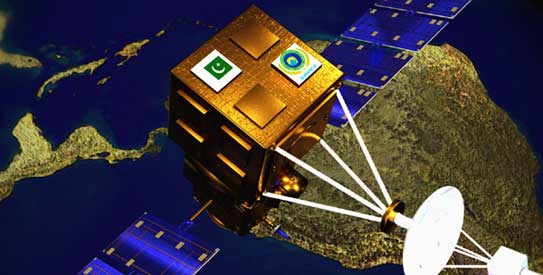Pakistan’s long-serving communications satellite, PakSat-1R, is approaching the end of its operational life, prompting a gradual transition of television and data services to the newly launched PakSat-MM1 (also called PakSat-MM1R).
Background: PakSat-1R’s Service Legacy
PakSat-1R was launched in August 2011 using China’s Long March 3B/E rocket and placed at 38° East longitude. (NASASpaceFlight.com)
It is based on China’s DFH-4 satellite bus, with 12 C-band and 18 Ku-band transponders, and was designed for a 15-year mission life. (Global Security)
According to SUPARCO records, its operational life is listed as 15 years. (Suparco)
Given that 2026 will mark 15 years of service, observers consider PakSat-1R to be nearing its planned expiry.
The Transition to PakSat-MM1 (MM1R)
Pakistan’s next-generation satellite, PakSat-MM1 (also referenced as PakSat-MM1R in many technical sources), was launched on 30 May 2024 from China’s Xichang Satellite Launch Centre.
It is based on the DFH-4E bus, carries C, Ku, Ka, and L-band payloads, and is designed for a 15-year service life. (Skyrocket Space)
The satellite is positioned at 38.2° E, slightly shifted relative to PakSat-1R’s slot, but close enough for continuity of coverage. (Suparco)
SUPARCO describes PakSat-MM1 as a “high power multi-mission satellite” that supports broadband, TV broadcast, mobile backhaul, and VSAT connectivity. (Suparco)
According to Gunter’s Space Page, the satellite carries 48 transponders and nine antennas, serving a broad regional footprint including Pakistan, neighboring regions, parts of Africa, the Middle East, and portions of Europe. (Skyrocket Space)
How the Migration Is Likely Unfolding
While I did not find a public, authoritative confirmation of which specific Pakistani TV channels have been switched to MM1, it is plausible that broadcasters are gradually migrating.
Some industry commentary suggests this is a phased shift to ensure continuity as older transponders become less reliable.
The key advantages for broadcasters and telecom operators in using PakSat-MM1 include:
- Access to more powerful beams and additional capacity (via Ka-band and expanded C/Ku payloads)
- Better signal quality and extended coverage
- The ability to deploy broadband / high-throughput services, especially in underserved or remote areas
For viewers, the practical effect may be modest — for many, simply re-scanning their satellite receivers may restore channels once they switch frequencies.
Context & Future Implications
At present, Pakistan can be said to maintain two satellites in geostationary service:
- PakSat-1R (aging, nearing retirement)
- PakSat-MM1 (active, next-gen)
Other space assets — such as Earth observation satellites — remain part of SUPARCO’s portfolio, though I did not locate reliable sources confirming a functioning lunar probe “ICUBE-Q” under national control as of now. (There is public coverage of a Pakistani lunar / CubeSat initiative, but details remain sparse in official sources.)
Once PakSat-1R exhausts its station-keeping fuel or reaches end-of-life, it is standard practice to move decommissioned GEO satellites into a “graveyard orbit” (a higher-altitude disposal orbit). That eventual step seems likely, though I found no public SUPARCO announcement confirming this yet.
Key Specifications (Comparison)
| Metric | PakSat-1R | PakSat-MM1 / MM1R |
| Launch Year | 2011 (NASASpaceFlight.com) | 2024 |
| Bus | DFH-4 (NASASpaceFlight.com) | DFH-4E (Skyrocket Space) |
| Bands / Payload | C & Ku (Suparco) | C, Ku, Ka, L (Skyrocket Space) |
| Design Life | 15 years (Global Security) | 15 years (Skyrocket Space) |
| Orbital Slot | 38° E (Suparco) | 38.2° E (Suparco) |
About the Author:
Rashid Mehmood is a technology and telecom analyst specializing in space, broadband, AI, and cloud-based infrastructure. With deep expertise in Pakistan’s digital networks and satellite systems, he writes on emerging technologies, cybersecurity, and deepfake detection trends shaping the nation’s digital future.





